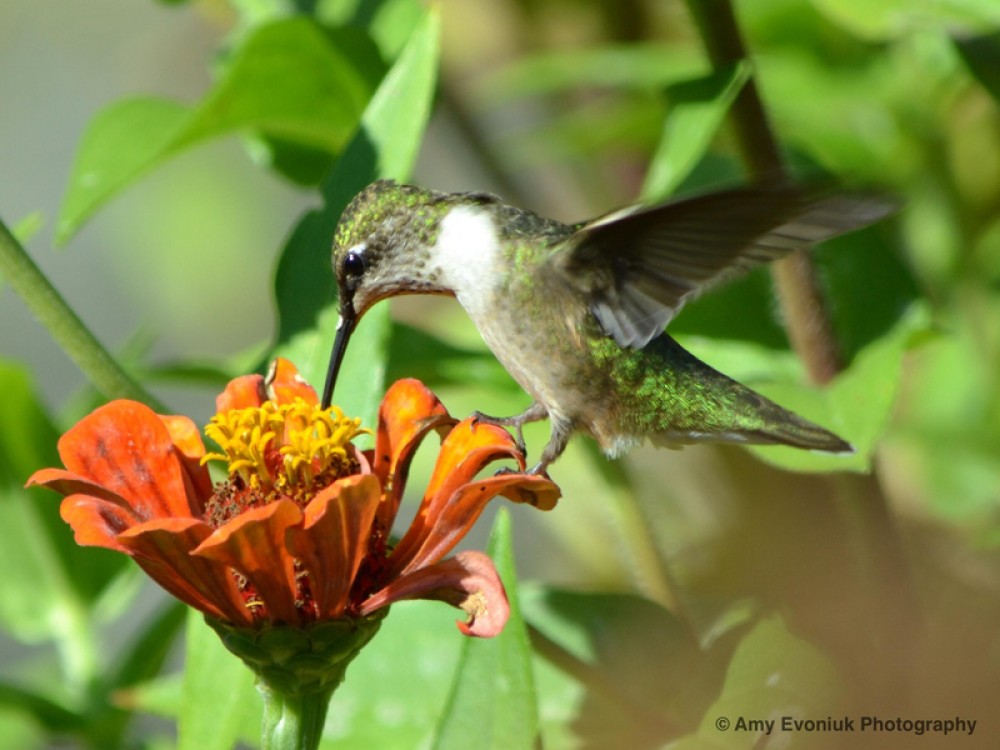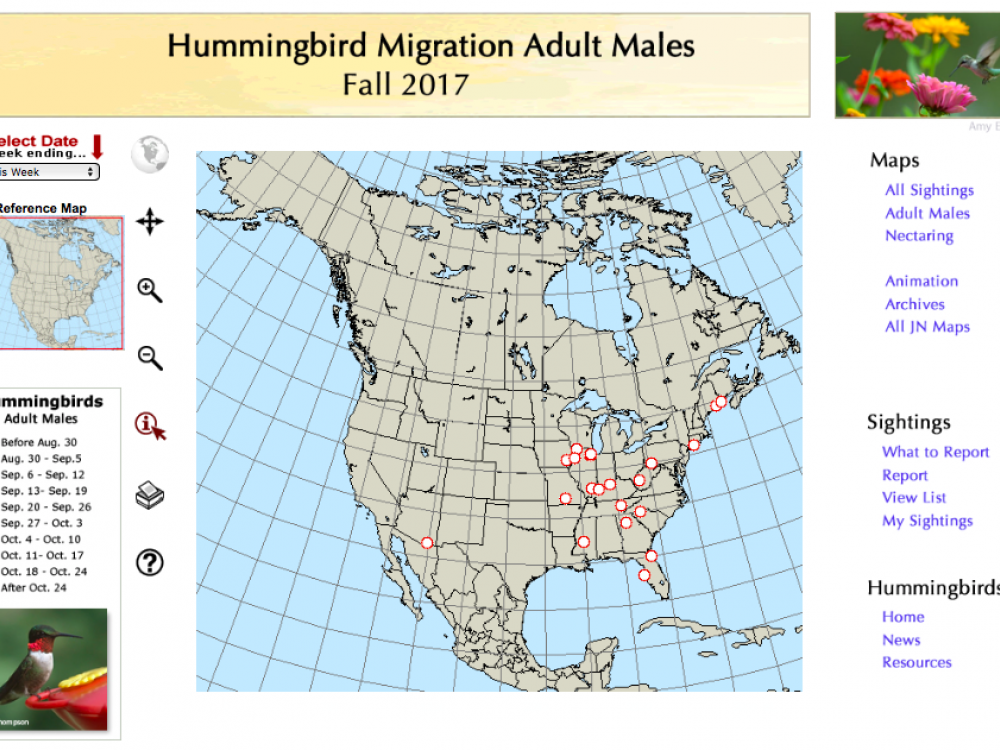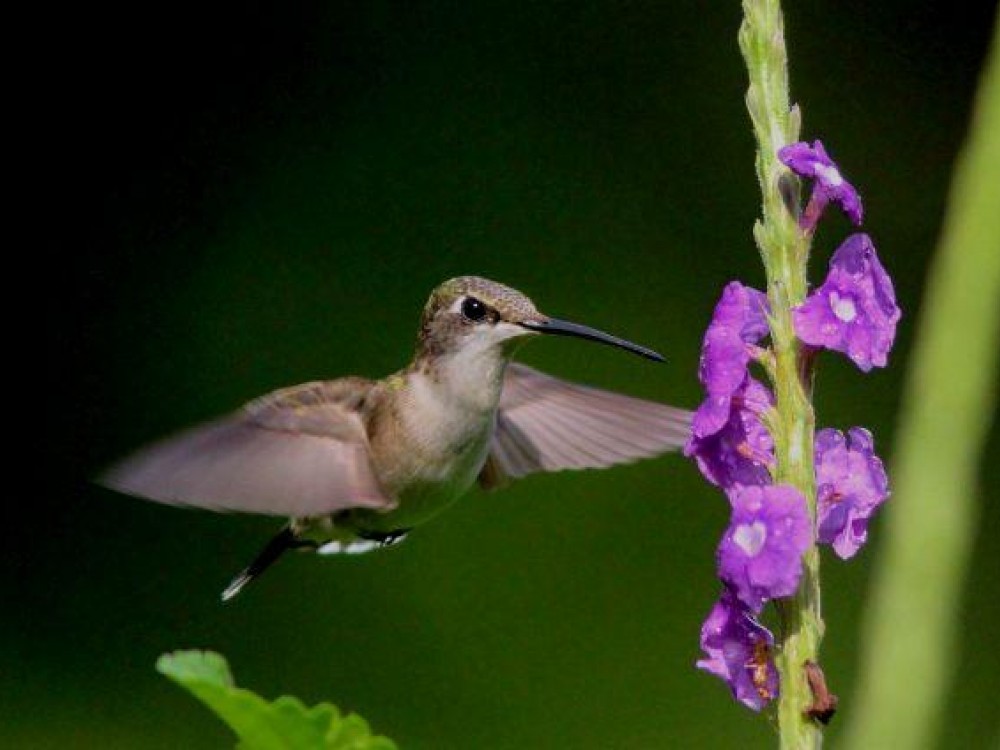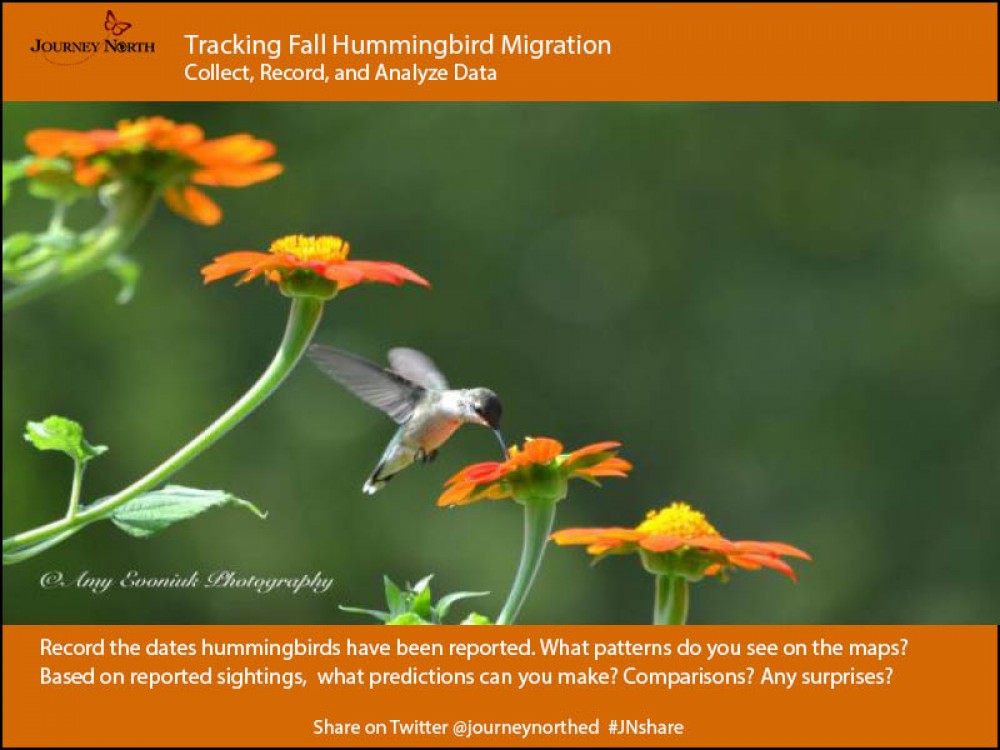Analyze Fall Data
Fueled by the nectar, hummingbirds double their weight as they prepare to fly hundreds or even thousands of miles. Males leave first, as early as mid-July. Females follow, and then the young who migrate for the first time all alone.

Tracking Fall Migration
Citizen scientists across North America are observing seasonal changes and reporting hummingbird sightings. Join us as we track the migration of hummingbirds traveling to their wintering grounds. Photo by Amy Evoniuk

Migration Maps
Study the migration maps. Record the dates hummingbirds have been reported. What patterns do you see? Based on these sightings, can you identify waves of migrants moving in certain directions?

Weather Maps
Study current weather maps. Pay attention to the temperatures and weather conditions in regions where hummingbirds have been sighted. Image by wind.com


